الأسواق
عند تصميم تدخل إنساني وتحديد ما إذا كان سيتم استخدام المساعدات النقدية والقسائم، يجب أن يكون تحليل السوق جزءًا من تحليل الاستجابة الشامل. وثبت أن دعم الأسواق للعمل بشكل جيد يؤدي إلى تعافي أسرع وزيادة المرونة في المناطق المتضررة من الكوارث.
واستثمرت العديد من المنظمات في تطوير أدوات لدعم تحليل السوق وتفكر في البرمجة القائمة على السوق بشكل أكثر شمولية. يشمل ذلك التدخلات التي تستخدم السوق (مثل التحويلات النقدية إلى السكان المتضررين)، بالإضافة إلى التدخلات التي تدعم الأسواق بشكل مباشر (مثل المنح المشروطة للمتداولين لإعادة تشغيل أسواقهم).
Related initiatives
Featured content

Introduction to Market Analysis
دورة تدريبية
This 30 minute online course provides an introduction to the analysis of markets in emergency contexts, with input from some of the world’s leading thinkers on the topic.

A Practical Guide to Market Analysis in Humanitarian response
دورة تدريبية
A three to four hour online course designed to provide future humanitarian market assessment team members with a solid understanding of theory and steps of market assessments so that they can join assessment teams prepared with a basic understanding of what they will be doing and why.
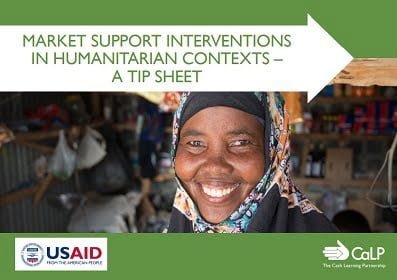
Market Support Interventions in Humanitarian Contexts – a Tip Sheet
Guidelines and Tools
This tip sheet defines what market support programming in humanitarian contexts is, and what it can look like in practice. It enables humanitarian practitioners to systematically consider market support interventions alongside other programme activities. The scope includes support interventions focusing on supply/availability and on demand/access. The tip sheet is based on secondary data...
Latest
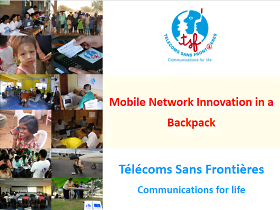
Mobile Network Innovation in a Backpack
Report
Our Core Activities – Rapid response telecommunications centres – Humanitarian calling operations (HCO) – free calls for civilians – Building local capacity for disaster preparedness – Bridging the digital divide with long-term community centers

2013 Humanitarian Accountability Report
Report
To celebrate the Humanitarian Accountability Partnership’s 10th anniversary, the 2013 Humanitarian Accountability Report reviews progress made over the past decade, and looks at the innovations the sector has adopted to make itself more accountable to populations affected by crises.
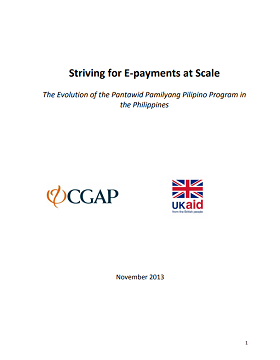
Striving for E-Payments at Scale in the Philippines
Report
As the Philippines experienced economic growth in the early 2000s, it still saw a rise in poverty. The Pantawid Pamilyang Pilipino Program (4Ps) is a conditional cash transfer program that aims to provide short-term poverty alleviation for poor households. The program emerged out of the country’s...

The Effect of Cash, Vouchers and Food Transfers on Intimate Partner Violence: Evidence from a randomized experiment in Northern Ecuador
Report
Despite the pervasive and far reaching consequences of intimate partner violence (IPV), there is little conclusive evidence on policy instruments to reduce or prevent violence. Using a randomized experiment in Northern Ecuador, this study provides evidence on whether cash, vouchers and food transfers...
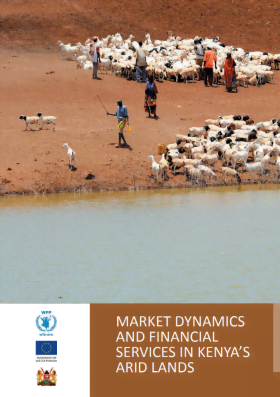
Markets dynamics and financial services in Kenya’s Arid and Semi-Arid Lands
Guidelines and Tools
The Vulnerability Analysis and Mapping (VAM) team of WFP recently finalised a market study on the Arid and Semi-Arid Lands (ASALs) of Kenya. The study explores market dynamics and financial service access for pastoral communities. This executive summary shortly presents the findings of this study. The...
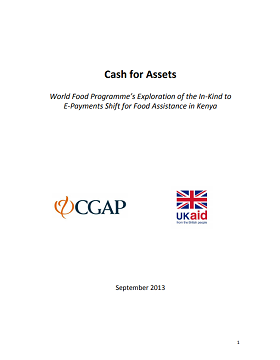
Shifting Food Assistance in Kenya to E-Payments
Report
The shift away from in-kind aid as the preferred mechanism for humanitarian assistance has contributed to the rise of cash transfers in Kenya. In 2008, the World Food Programme (WFP) for the first time shifted strategically from a food aid to a food assistance strategy, recognizing new and diverse ways in...
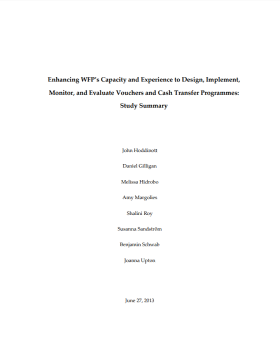
Enhancing WFP’s Capacity and Experience to Design, Implement, Monitor, and Evaluate Vouchers and Cash Transfer Programmes: Study summary
Report
With support from the Government of Spain, and in partnership with the World Food Programme (WFP), researchers from the International Food Policy Research Institute (IFPRI) evaluated four pilot projects to assess the comparative performance of cash transfers, food payments, and vouchers on household food...

Gatekeepers in Mogadishu: Research Consultancy
Report
Since 2011 the Somalia Cash Consortium has been implementing large-scale unconditional cash transfers (UCTs) under the Food Assistance to Vulnerable Households in South Central Somalia. Members of the Consortium have been confronted with the challenge of having to negotiate security and access to IDP...
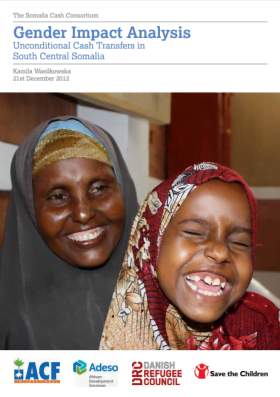
Gender Impact Analysis: Unconditional cash transfers in South Central Somalia
Case Study
The Cash Consortium is a group of four NGOs (ACF, Adeso, DRC and Save the Children) that came together in mid-2011 to coordinate their aid response and use unconditional cash grants to meet the basic food and non-food needs of the most vulnerable households in South Central Somalia. The primary objective...
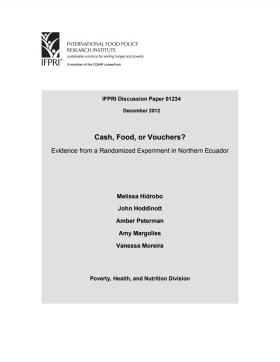
Cash, Food, or Vouchers? Evidence from a randomized experiment in Northern Ecuador
Report
The debate over whether to provide food assistance and the form that this assistance should take has a long history in economics. Despite the ongoing debate, little rigorous evidence exists that compares food assistance in the form of cash versus in-kind. This paper uses a randomized evaluation in...
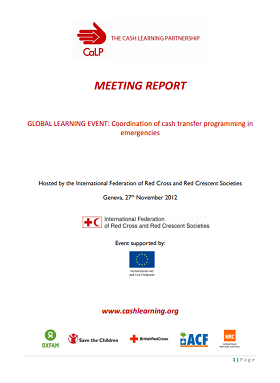
Global Learning Event: Coordination of Cash Transfer Programming in Emergencies
Report
The CALP Network convened a learning event, hosted by the International Federation of Red Cross and Red Crescent Society on 27th November 2012, to explore the issue of the coordination of cash
transfers in emergencies. The meeting provided a platform for dialogue with actors from the UN system, NGOs,...
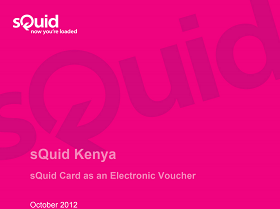
sQuid Card As An Electronic Voucher Aid Management
Report
Electronic payments technologies have advanced significantly and some have the capability to meet the demands of transferring money to large numbers of recipients with a high level of accountability that must accompany such cash transfer programmes. sQuid is one of these.

Humanitarian Coalition East Africa Drought Appeal: Final Evaluation – Somalia
Case Study
In 2011, Somalia suffered from one of the worst droughts in 60 years which left more than 13 million people in need of food, water and emergency healthcare. Canadian donors contributed $14 million to the Humanitarian Coalition’s joint appeal for East Africa’s drought of 2011. These funds helped to...
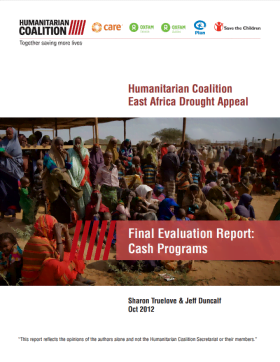
Humanitarian Coalition East Africa Drought Appeal: Final evaluation report – Cash programs
Report
In 2011, suffered from one of the worst droughts in 60 years which left more than 13 million people in need of food, water and emergency healthcare. Canadian donors contributed $14 million to the Humanitarian Coalition’s joint appeal for East Africa’s drought of 2011. These funds helped to set up...
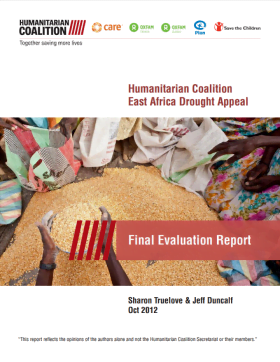
Humanitarian Coalition East Africa Drought Appeal: Final evaluation report
Report
In 2011, suffered from one of the worst droughts in 60 years which left more than 13 million people in need of food, water and emergency healthcare. Canadian donors contributed $14 million to the Humanitarian Coalition’s joint appeal for East Africa’s drought of 2011. These funds helped to set up...

The Crisis in the Sahel – Special Feature
Report
The special feature of this issue of Humanitarian Exchange focuses on the humanitarian crisis in the Sahel region of Africa, where aid agencies estimate that more than 18 million people are affected by food insecurity. In response to this crisis, cash and vouchers programming has been largely used. In...

Cash Consortium for South/Central Somalia: Combined Risk Analysis
Report
Since mid-2011, the Cash Consortium has been providing access to food and other non-food items through unconditional cash grants for the most vulnerable populations in South Central Somalia. The context is highly challenging, due to continuing conflict, lack of governance, high criminality and low levels...
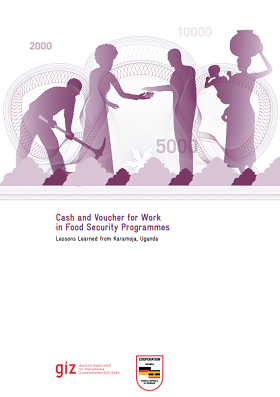
Cash and Voucher for Work in Food Security Programmes: Lessons learned from Karamoja, Uganda
Case Study
This report examines a Deutsche Gesellschaft für Internationale Zusammenarbeit (GIZ) GmbH supported labour-intensive cash for work and voucher for work project which was implemented in the framework of GIZ’s Food and Nutrition Security and Conflict Management Project (FNS) in Karamoja. The FNS project...
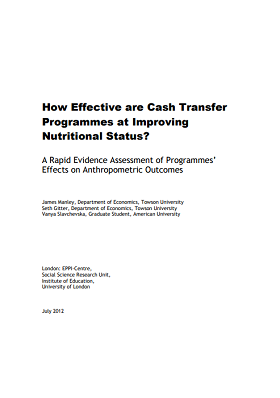
How Effective are Cash Transfer Programmes at Improving Nutritional Status?
Report
Cash transfer programmes are a widely applied social protection scheme that has achieved successes in fighting poverty worldwide. A large literature has sprung up around these programmes, yet the relationship between cash transfer programmes and the nutritional status of recipient children is unclear. Can...
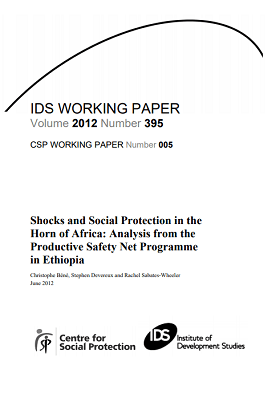
Shocks and Social Protection in the Horn of Africa: Analysis from the Productive Safety Net Programme in Ethiopia
Case Study
Using panel data from the Ethiopian Productive Safety Net Program, this paper explores the degree to which this social protection programme has been successful in protecting its beneficiaries against the various shocks that have affected the Horn of Africa in the recent past. The analysis suggests that...